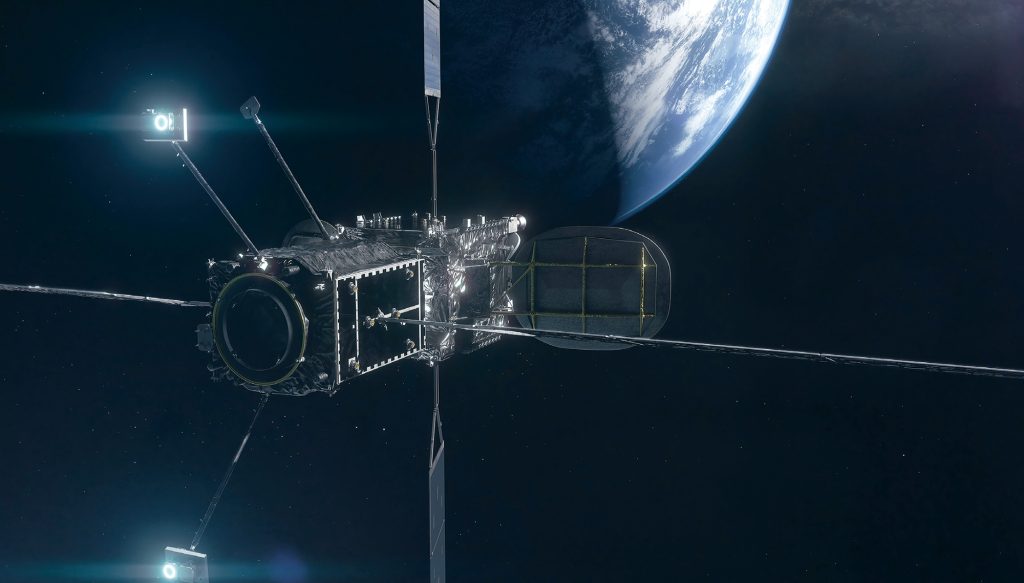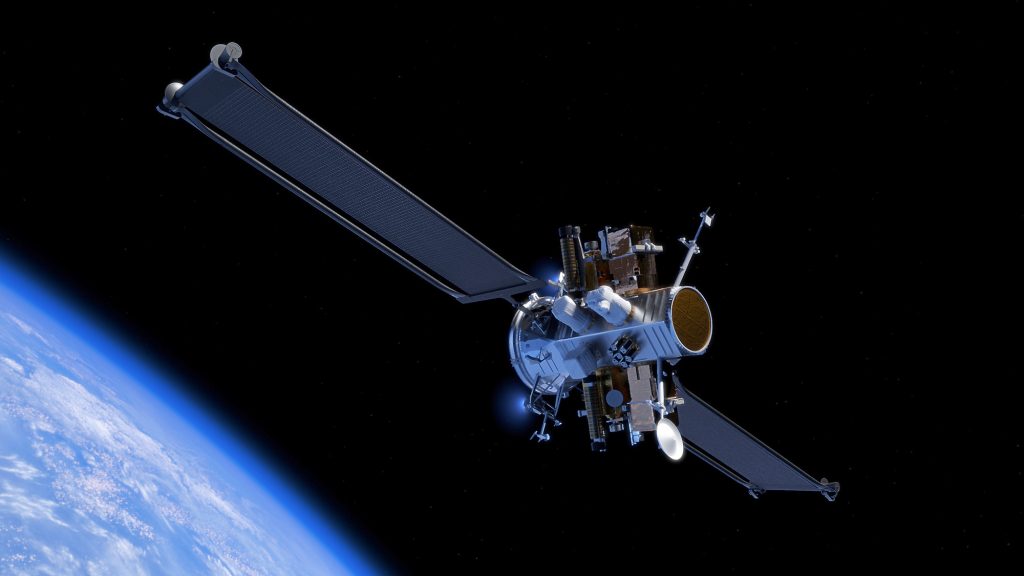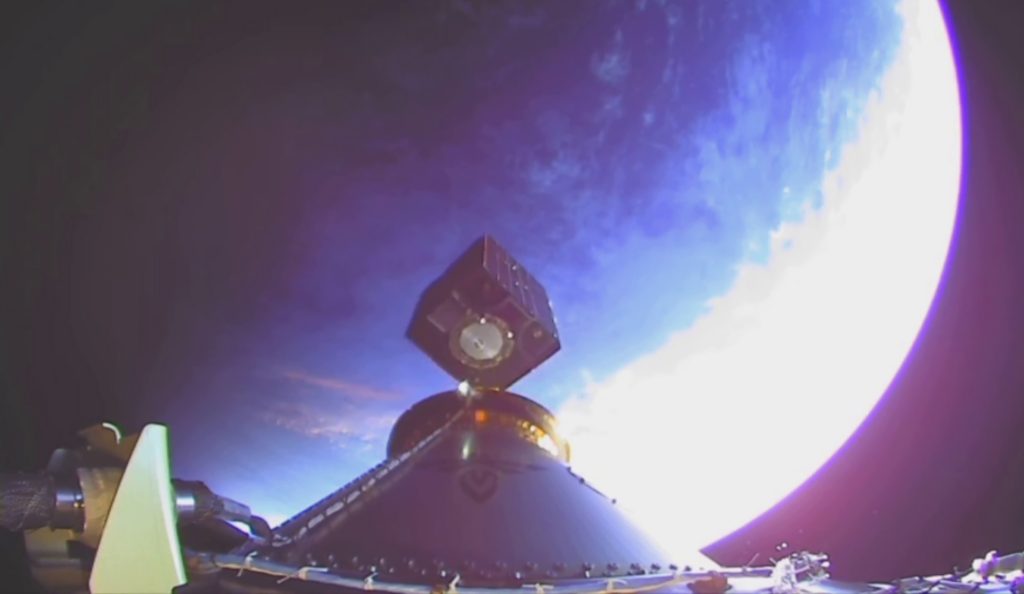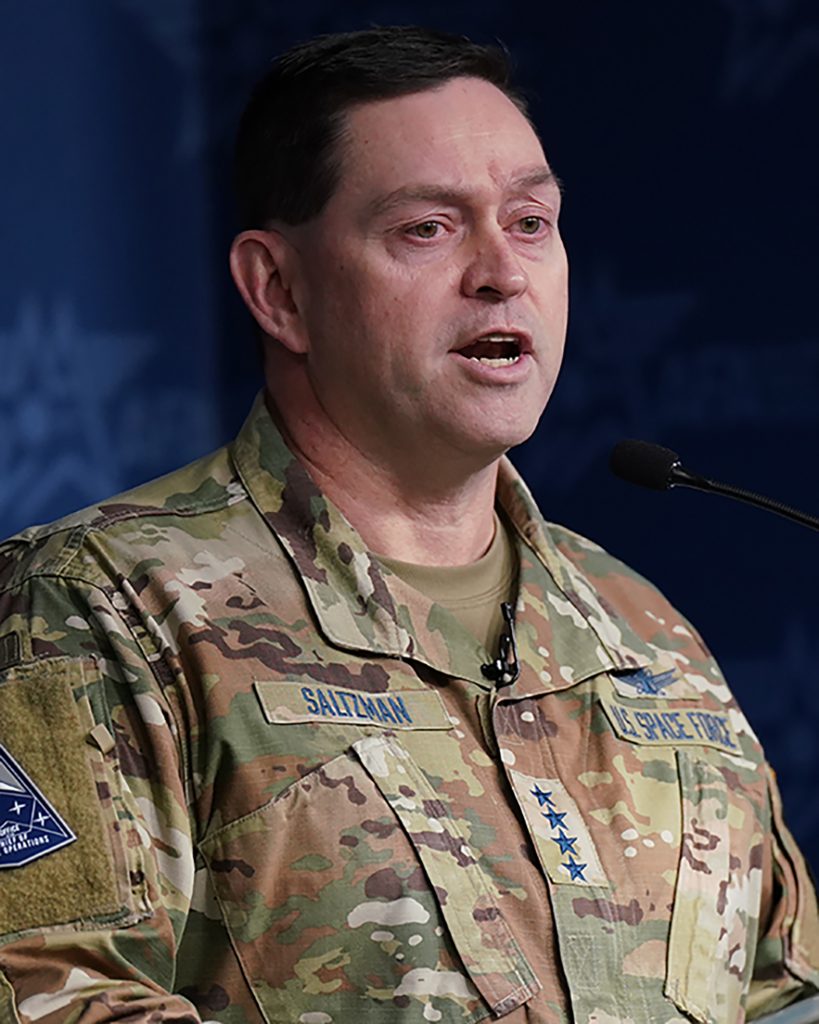From space to tankers to rapid launch, USSF looks to maneuver like never before.
The Space Force and the Air Force have for decades followed the same tried-and-true method: Spend years developing massive, costly satellites and then schedule launches to lift them into orbit months or longer in advance. Once in place, those satellites mostly stay put in their orbits, preserving as much fuel as possible, because once that fuel is gone, the spacecraft’s service life is over.
More recently, the Space Force is rethinking that formula by planning, building, and launching into orbit large constellations of much smaller satellites. The concept enables the service’s resilience strategy.
Now USSF is adding a new wrinkle: dynamic operations. Whether delivering satellites into orbit in days, maneuvering satellites more frequently and actively, or refueling them in orbit, the Space Force is starting to reshape its operational concepts to respond and stay ahead in an increasingly complex and unpredictable domain.
“We know speed to orbit and we know resiliency on orbit are fundamental principles that we want to adhere to,” Chief of Space Operations Gen. B. Chance Saltzman told reporters at the inaugural Spacepower Conference in December. “Now how do we take advantage of it, if we were to have it? That’s the work left to be done.”
The urgency of these new requirements is driven by the threats operators see today, where China, Russia, and others have the ability to destroy crucial satellites, potentially blinding U.S. intelligence.
Retired USSF Lt. Gen. John E. Shaw made the case for “dynamic space operations” when he was still vice commander at U.S. Space Command.
“The way we’ve been doing space operations since the dawn of the space age, we’ve been doing it wrong,” Shaw said in July 2023 during a discussion with AFA’s Mitchell Institute for Aerospace Studies. “We’re trying to articulate a requirement to the Space Force that we need to be able to have sustained space maneuver.”

Indeed, that capability can be traced to the founding of the Space Force in the first place. The service’s first doctrine document, published in June 2020, included Space Mobility and Logistics (SM&L) among five core competencies USSF needed to demonstrate. Crucially, SM&L included “the movement and support of military equipment and personnel … through the space domain,” as well as the ability to sustain, update, and recover spacecraft in orbit, the doctrine stated.
Still, the concept has evolved over time. At the Spacepower Conference, Saltzman described a future with “almost continuous maneuvering, so that the satellite from any one radar shot looks like it’s maneuvering and it’s just kind of constantly changing its orbit as it goes through—preserving mission but changing its orbit.”
Such maneuvering is not possible with the satellites the U.S. currently has on orbit, which launched with only enough propellant to maintain their station and were never designed to be refueled.
“[Once] I run out of a consumable, then you technically, functionally kill me,” said Deputy Chief of Space Operations for Operations, Cyber, and Nuclear Lt. Gen. DeAnna M. Burt in another Mitchell Institute event.
That limitation is untenable as Russia and China demonstrate the ability to harass satellites with their own maneuverable orbital assets. The more they can force fuel burns, the shorter they can make the lives of operating spacecraft. In addition to direct-ascent anti-satellite missiles, both countries have demonstrated additional anti-satellite capabilities in recent years:
- The Chinese launched an uncrewed space plane, which reportedly released six mysterious objects into orbit.
- A Chinese satellite with a “grappling arm” pulled another satellite out of its orbit.
- A Russian “nesting doll” satellite has deployed multiple spacecraft after reaching orbit.
Russian and Chinese satellites have also maneuvered into position near U.S. assets. U.S. space operators need to show “you can move, you can respond and do things,” said Kelly D. Hammett, director of the Space Rapid Capabilities Office.
“Our commercial systems are watching what the Chinese, in particular, are doing on orbit right now,” Hammett added. “They’re practicing tactics and techniques. They’re maneuvering, they’re showing how they would ingress on potential targets. They’re completing robotic maneuvers and rendezvous and [proximity] ops. How will we [respond] to address those threats and potentially fight the space war fight?”
Operators and leaders at U.S. SPACECOM believe dynamic space operations is the answer, and Space Force acquisition officials and futurists are working to flesh out and fulfill that vision.
“When we listen to the demand signal from U.S. Space Command and the need to do dynamic space operations, the need to be able to maneuver without regret, that capability is now coming from us,” said Brig. Gen. Kristin L. Panzenhagen, program executive officer for the Assured Access to Space directorate. “It shouldn’t be a surprise or anything—one of the principles of warfare is maneuver. So now here we are in the space domain with a need to do that.”
The Air Force went through a similar process in the late 1940s, Burt said, recalling that USAF invested in and experimented with aerial refueling at that time precisely to increase the range and maneuverability of its strategic bomber fleet. Today, aerial refueling is central to Air Force operations—and those of the other services, as well.
The Space Force has a long way to go before space refueling is routine—Saltzman described the concept as still in the “good idea phase”—but to “our futurists, our people that are considering operational concepts that are several years down the road, this is one of the things that they’re factoring in,” he said.

SPACE TANKERS
Hammett said the Space RCO is now only building refuellable satellites, and Saltzman said the answer could also be equipping each small satellite with greater amounts of fuel. On Dec. 11, the Assured Access to Space directorate issued a request for information from industry on ideas of refueling and mobility.
“One thing we really need to understand fully is the concept of operations and the demand signals,” Panzenhagen said. “So we appreciate from the program office side, we’ve had a lot of tabletop exercises, really trying to understand what those requirements are. We’ve now got satellite program offices that are starting to build for refueling capability. For the industry side of the house, what we really need to understand is one, the state of technology—and I think we’re getting a much better understanding of that. … But we also really need to understand the business case.”
Industry interest is high. Startup Orbit Fab has proposed a standard refueling port that could enable satellites to dock into “gas stations in space.” Its first refueler is scheduled to be launched into geosynchronous orbit in 2025.
Northrop Grumman is offering in-orbit refueling through its subsidiary, SpaceLogistics, and launch provider Blue Origin recently unveiled its Blue Ring, a new spacecraft “focused on providing in-space logistics and delivery,” including fuel.
“The Blue Ring is going to offer a lot of on-orbit capability: several kilometers per second in Delta V, a hybrid propulsion solution, and thousands of kilograms of mass toward the capability and the ability to stay on orbit, the ability to maneuver on orbit, the ability to maneuver between orbits and beyond GEO into cislunar,” said Blue Origin Vice President of Government Sales Lars Hoffman. “These kinds of capabilities that we’re talking about here are going to complicate the calculus of our adversary. It’s going to challenge their thinking. And it’s opening up all sorts of new ideas for our Guardians to be thinking about, ‘What would I do with that?’”
Burt says all this raises intriguing logistical questions.
“Do you do this as a service? Do you buy this capability?” Burt asked. “Or do I buy it as a service from the commercial piece, so I create space gas stations, or space gas trucks? What is your model and how do you get after that? I think that’s what we’re trying to determine, is what is the most efficient way to get after that in a way that gets us the capability as quickly as possible?”
In August 2023, a tabletop exercise dubbed “Parallax Rising” in El Segundo, Calif., brought together experts from Space Systems Command (SSC), academia, and industry to define the possibilities and challenges. The primary considerations for the exercise included:
- “What types of refuelers are preferred when conflict extends into space, and why?”
- How would commercial and military refuelers integrate?
- What refueling procedures from the Navy and Air Force can be applied to the Space Force?
SSC promised the findings from the exercise would inform future acquisition decisions. Burt raised another issue: “How do you normalize servicing or refueling or those kinds of things?”

RAPID DELIVERY
Refueling isn’t the only major change coming in how the Space Force responds to new threats and requirements. The service is also pushing forward with its Tactically Responsive Space (TacRS) program, to deliver satellites into orbit faster than ever.
In September, USSF shattered records with a mission that built a satellite in less than a year, then sent it into orbit just 27 hours after receiving launch orders. Saltzman later likened the mission, dubbed “Victus Nox,” to Chuck Yeager’s breaking of the sound barrier in 1947.
“Chuck Yeager breaks the sound barrier. Big deal, it’s one airplane. What are you going to do with it?” Saltzman said in October. “It opens the door. It shows the capability. It shows what you can do. It shows how you do it.”
Expanding on that two months later, Saltzman said it is “cost-imposing capability that our adversaries will now need to prepare for.”
More TacRS missions are coming as the Space Force builds on its capacity to respond “under attack,” then-SSC commander Lt. Gen. Michael Guetlein said—Guetlein has since pinned on a fourth star and become vice chief of space operations.
Similar to dynamic operations in orbit, the ability to put new assets in space bolsters a central tenet in Saltzman’s “Competitive Endurance” theory—denying first-mover advantage. For years now, officials have bemoaned U.S. satellites as “big, fat, juicy targets” and warned that an attack on any one of them could wreak havoc not only on military operations, but the global economy.
The ability to move those satellites around and, if necessary, replace them quickly, changes the cost calculations of any adversary.
Becoming more dynamic and responsive will come with potential challenges, though. Hammett noted that command and control in space is poised to become vastly more complex if satellites are going up faster than ever and moving once they reach orbit—especially given the catastrophic effects a collision in space can have.
“When you think about … all the systems that SDA, SSC, and we are building, there are a lot of things coming in the next three years, and now they can all maneuver,” Hammett said. “Now they all need to maneuver to respond to threats. How do you synchronize those? How do you tell everything where to go and when to go there? You need more capability to C2 those things.”
This more flexible approach changes “how you do space domain awareness,” Saltzman said: “Keeping track of a dynamically moving object is fundamentally different than anything we do now.” That poses challenges to USSF, but even greater challenges to potential adversaries.
Now, as the Space Force heads into its fifth year, Saltzman is focused on maintaining that momentum.
“Being able to put something on orbit in a matter of days, like we showed, the ability then to protect the satellite through dynamic maneuvering: How do these operational concepts support the theory of success?” Saltzman asked. “How do they help us either create resiliency, do responsible counterspace campaigning? How does it help us avoid operational surprise? … What are the potential possibilities for how all this fits together? And kind of the easy answer is … I don’t know yet. We’re asking all those questions.”


